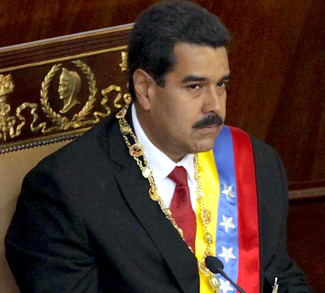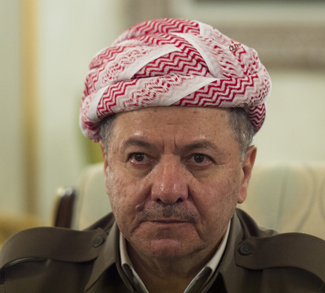In May 2016, Islamic State released a 22-minute video featuring at least six Indians. Open source reports indicate that at least four of them in the video have been positively identified as Sajid Bada, Abu Rashid from Azamgarh, Aman Tandel, and Fahad Shaikh from Maharashtra. Sajid Bada and Saheem Tanki were reported to have been killed in Syria way back in 2015. Interestingly, both of them have featured prominently in the latest video, generating doubts about the actual veracity of the earlier reports claiming them to be dead. However, the Indian government was quick to dismiss this latest video as being shot 10 months back, sometime in September 2015.
It would be quite intriguing to understand the reasons behind the delayed release of the video in May 2016, which was shot in 2015 itself. Islamic State, unlike many other terrorist groups, considers propaganda as a part of its strategic program and uses it as a tool to draw recruits from different parts of the world. To this effect, Islamic State runs an unrivalled media apparatus which is known for its creative, blitzkrieg propaganda using social media platforms like the Twitter and slick magazines like the Dabiq and Istok. Given the intent of the Islamic State and its ability to disperse propaganda at a faster rate to a much wider audience, the delayed release of this particular video, which is quite uncharacteristic of Islamic State, only adds to the mystery. Studying the contents of the messages propagated in this video would be germane to understanding the current thinking of the Islamic State towards India, and it would possibly help find some answers to this mystery. And more importantly, the timing of the delayed release of this video – 10 months later – raises its own interesting questions.
Firstly, the video features Abu Amr al Hindi, the nom de guerre of Aman Tandel, one of the four youngsters from Mumbai who travelled to Iraq in May 2014 to join the Islamic State in Iraq and Syria. Aman Tandel along with Fahad Tanveer Shaikh who also features in the video, was a part of the four-member group which travelled to Iraq in 2014. Shaikh was handling a pro-Islamic State Twitter account @magnetgas and propagating the terror group’s ideology. Another member of the group, Saheem Tanki, is believed to have been killed in Iraq.
Interestingly, Areeb Majeed, who was also part of this small coterie, returned to India claiming that life is difficult under the Islamic State and is presently in the custody of the National Investigation Agency. This notion is precisely the one which the Indians members of the Islamic State wanted to dispel. According to Indian Express, Tandel calls on young Muslim men in India to come to Syria for Hijrah (migration to the Islamic State) allaying fears about difficult life with Islamic State, the very reason for which one of his accomplices returned to India. Tandel states: “We are doing just fine and not at all distressed in the Islamic State. This land provides dignity to Muslims. We won’t leave this land.”
Secondly, this video has been released at a time when the Islamic State has seen severe setbacks in Syria and Iraq on the military front. According to IHS Janes, Islamic State has lost around 22% of its territory to its rivals which were earlier under its control. And its monthly revenue has almost dropped from $80 million in June 2015 to $56 million as of March 2016. This setback for Islamic State on the global stage has forced it to rearrange its focus in South Asia, especially towards India.
The Islamic community in India, which is Islamic State’s target segment for recruitment, have largely ignored Islamic State. As a result, Islamic State has not been able to attract large number Indians into its fold from the country’s large Muslim population base. As of June 2016, only 27 Indians have managed to travel to Syria and Iraq and an equal number of Indians have been stopped from travelling to Syria from India. And its efforts to set up a local franchise in India, namely Junood-ul-Khalifa-e-Hind, also has not borne fruit as around 25 operatives, including its Ameer Mudabbir Mushtaq Shaikh, have been arrested by the National Investigation Agency (NIA) in India.
Thirdly, and more importantly, Islamic State has released this video in order to ramp up its recruitment by touching on sensitive issues which have in the past fomented violent extremism in India. The message in the video is more India centric relating to issues pertaining to Babri Masjid and riots in Gujarat, Uttar Pradesh (UP). and Kashmir. According to Indian Express, Tandel vows: “We will return, but with a sword in hand, to avenge the Babri Masjid, and the killings of Muslims in Kashmir, in Gujarat, and in Muzaffarnagar.”
This statement is echoed by another Indian who also figures in the video. Abu Rashid states that they will avenge every crime that has been committed against Muslims in India. By touching upon the demolition of Babri Masjid and the communal pogrom against the Muslims in Gujarat, Muzaffarnagar (UP), Islamic State has attempted to ignite and plant the idea of atrocities being committed against the Muslims in India. In this way, Islamic State is trying to attract more Indian youngsters into its fold.
This is the first instance where Indian members of the Islamic State have commented on highly sensitive issues in India, which in the past have impacted the communal atmosphere in India. In a direct message, one of the Indian operative states that the Indians are left only with three options: embrace Islam, pay the Jizya (a form of tax for non-practitioners of Islam), or be slaughtered. The video also chastises local Muslim politicians and clerics in India for not standing up against the atrocities committed against the Muslim community in India.
Given the backdrop of Islamic State’s steady deterioration in Syria and Iraq, it would not be an exaggeration to state that the Islamic State is hunting for greener pastures in South Asia, more so in India. The delayed release of this video featuring Indians who are already dead and the messages with more India specific focus only shows that Islamic State is attempting to orchestrate or engineer a groundswell of pro-Islamic State sentiment in India, similar to the “Anwar al-Awlaki” moments for Al Qaeda whose video sermons inspired many even after his death. This sudden transition to an India centric approach which is more prominent compared to the usual call or cries to the broader idea of the Caliphate, could possibly reflect a sense of desperation on the part of Islamic State.




